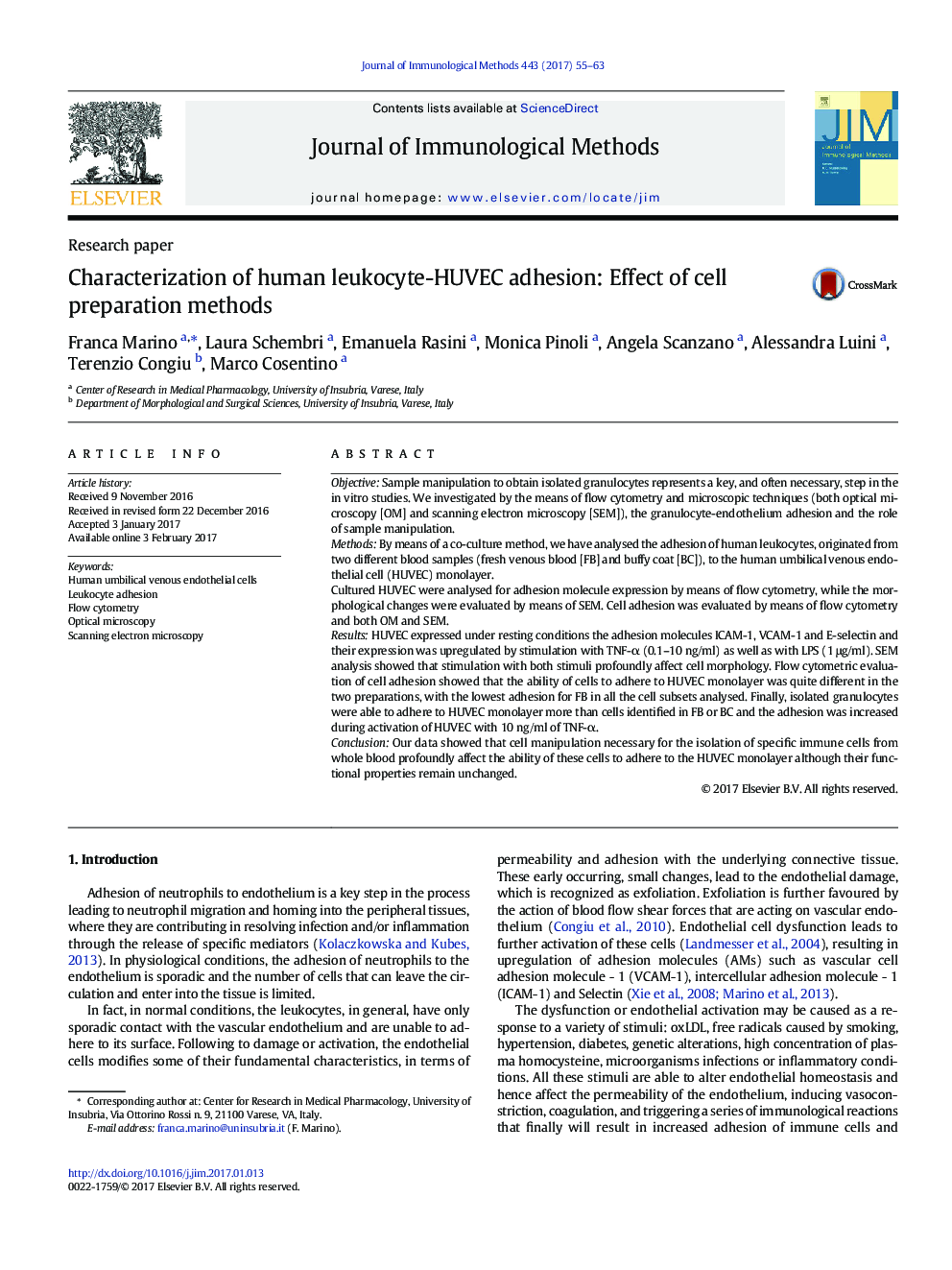| Article ID | Journal | Published Year | Pages | File Type |
|---|---|---|---|---|
| 5522031 | Journal of Immunological Methods | 2017 | 9 Pages |
ObjectiveSample manipulation to obtain isolated granulocytes represents a key, and often necessary, step in the in vitro studies. We investigated by the means of flow cytometry and microscopic techniques (both optical microscopy [OM] and scanning electron microscopy [SEM]), the granulocyte-endothelium adhesion and the role of sample manipulation.MethodsBy means of a co-culture method, we have analysed the adhesion of human leukocytes, originated from two different blood samples (fresh venous blood [FB] and buffy coat [BC]), to the human umbilical venous endothelial cell (HUVEC) monolayer.Cultured HUVEC were analysed for adhesion molecule expression by means of flow cytometry, while the morphological changes were evaluated by means of SEM. Cell adhesion was evaluated by means of flow cytometry and both OM and SEM.ResultsHUVEC expressed under resting conditions the adhesion molecules ICAM-1, VCAM-1 and E-selectin and their expression was upregulated by stimulation with TNF-α (0.1-10 ng/ml) as well as with LPS (1 μg/ml). SEM analysis showed that stimulation with both stimuli profoundly affect cell morphology. Flow cytometric evaluation of cell adhesion showed that the ability of cells to adhere to HUVEC monolayer was quite different in the two preparations, with the lowest adhesion for FB in all the cell subsets analysed. Finally, isolated granulocytes were able to adhere to HUVEC monolayer more than cells identified in FB or BC and the adhesion was increased during activation of HUVEC with 10 ng/ml of TNF-α.ConclusionOur data showed that cell manipulation necessary for the isolation of specific immune cells from whole blood profoundly affect the ability of these cells to adhere to the HUVEC monolayer although their functional properties remain unchanged.
